Transform your backyard into a 6-year-old’s adventure playground with activities that spark curiosity, build confidence, and nurture a lifelong love for the outdoors. At this energetic age, children are natural explorers ready to jump, climb, and discover the wonders of nature. From creating simple obstacle courses with fallen logs and hula hoops to starting a beginner’s butterfly garden, outdoor play combines physical activity with valuable learning experiences.
Nature scavenger hunts, DIY outdoor art projects, and basic gardening tasks perfectly match a 6-year-old’s developing motor skills and growing independence. These activities not only provide hours of entertainment but also help develop crucial physical coordination, problem-solving abilities, and environmental awareness. Whether you have a sprawling backyard or access to local parks, engaging your child in outdoor activities establishes healthy habits that last a lifetime.
Let’s explore safe, age-appropriate outdoor adventures that will keep your 6-year-old active, engaged, and excited about the natural world around them.
Safe Nature Exploration Activities
Nature Scavenger Hunts
Transform your backyard or local park into an exciting adventure zone with a nature-based scavenger hunt! After countless wildlife encounters in Ontario parks, I’ve learned that kids love searching for natural treasures.
Create a simple checklist with pictures for your 6-year-old to find common Ontario items like maple leaves, pinecones, smooth rocks, or feathers. Make it educational by including easily identifiable birds like Blue Jays or Cardinals, or common trees like White Pine or Sugar Maple. For added excitement, include seasonal items like spring trilliums or autumn acorns.
Pro tip: Give your little explorer a small paper bag or bucket for collecting items, and bring a magnifying glass for up-close discoveries. Remember to teach the “look but don’t pick” rule for living plants and always respect wildlife from a safe distance.
Make it extra fun by turning it into a photo safari! Let your child use a kid-friendly camera or smartphone (with supervision) to document their findings instead of collecting items. This creates lasting memories while protecting nature.
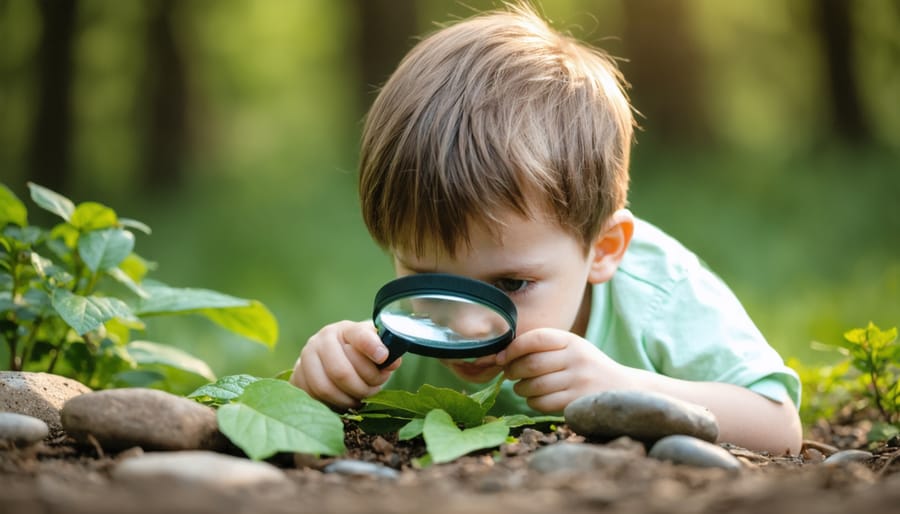
Rock and Leaf Collection
Turn your backyard or local park into a natural treasure hunt by creating rock and leaf collections with your 6-year-old. Give them a small basket or bucket and encourage them to gather interesting stones, leaves, and pinecones that catch their eye. Make it educational by asking them to find rocks of different colors or leaves from various trees – maple leaves are especially fun to collect in Ontario during fall!
Create a simple scavenger hunt list with pictures to help them identify common items. You might include smooth rocks, sparkly stones, red leaves, or heart-shaped pebbles. As you collect, talk about the different textures, colors, and patterns they find. This helps develop their observation skills and vocabulary.
Back home, set up a special display area for their findings. Use egg cartons for organizing rocks by size or color, or press leaves between wax paper to preserve them. Add labels with the date and location of each discovery. You can even start a nature journal together, where your child can draw their favorite finds and write simple descriptions.
Remember to teach respect for nature by only collecting items from the ground and leaving living plants untouched.
Water-Based Adventures
Supervised Beach Activities
The beach offers endless entertainment for energetic 6-year-olds, but safety always comes first. Always ensure your child wears a properly fitted life jacket near the water and apply waterproof sunscreen regularly. Stay within arm’s reach when they’re in the water, and teach them basic water safety rules like never turning their back to the waves.
For shoreline fun, bring along beach toys like plastic shovels and buckets for sandcastle building competitions. Challenge your little one to create moats, towers, and underwater tunnels. Collect shells and smooth stones together, turning it into an educational treasure hunt where they can sort their findings by size, color, or texture.
Wade in the shallow water to spot minnows and search for interesting pebbles. Create a simple scavenger hunt list with items like “something blue” or “something smooth” to keep them engaged. Bring along beach-friendly containers to examine their discoveries up close before returning them to nature.
Remember to pack plenty of water, healthy snacks, and a beach umbrella for shade breaks. The best beach experiences combine active play with quiet moments of discovery, allowing your child to explore safely while building confidence in the outdoor environment.
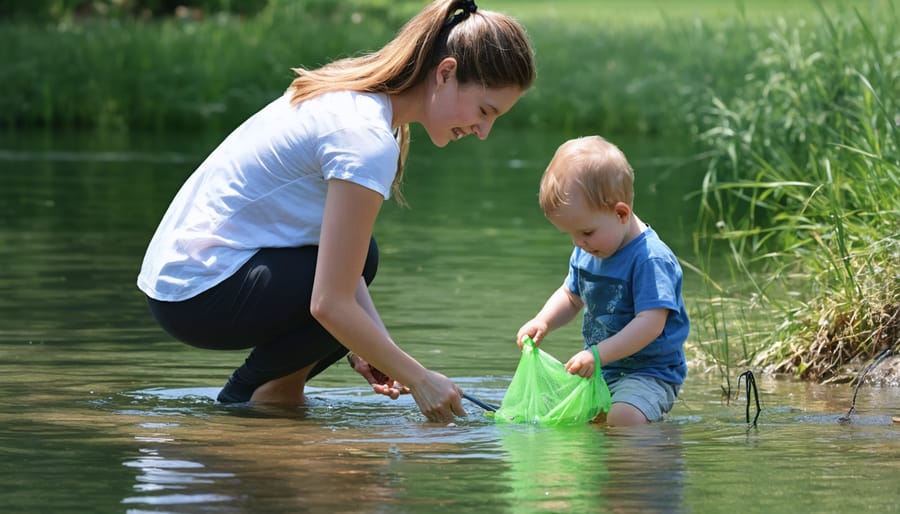
Shallow Water Exploration
Exploring shallow waters is a magical way for 6-year-olds to discover the wonders of nature. Start by choosing safe, calm spots like gentle creek beds or shallow lakeshores where the water barely reaches your child’s knees. Always supervise closely and establish clear boundaries for how far they can wade.
Equip your little explorer with water shoes to protect their feet from rocks and a small net for catching and releasing tiny water creatures. Turn the experience into a fun treasure hunt by looking for smooth stones, interesting leaves, or small fish darting through the clear water.
Remember to teach basic water safety rules in a way that’s easy for young minds to understand. Use the “buddy system” even in shallow water, and make a game out of staying within arm’s reach. Keep exploration sessions short, around 30 minutes, to maintain enthusiasm and prevent getting too cold.
Bring along a plastic container to temporarily house discoveries for closer observation, but always return creatures to their homes. This helps instill respect for nature early on. Pack extra towels and a change of clothes – splashing and excitement are guaranteed!
Trail Activities for Little Legs
Story Trail Adventures
Transform your regular hiking trail into a magical adventure by creating themed stories that unfold as you walk. Start by giving your child a special “explorer’s mission” – maybe they’re tracking fairy footprints or following a treasure map left by friendly forest creatures. Bring along a small backpack with props like a toy compass, magnifying glass, or binoculars to make the experience more authentic.
Create checkpoints along the trail where new parts of the story develop. For example, a twisted tree root becomes a sleeping dragon, or a cluster of mushrooms turns into a fairy village. Encourage your little one to collect nature treasures (like pinecones or smooth stones) that become “magical artifacts” in your tale.
Make the adventure interactive by asking your child questions like “What do you think lives behind that fallen log?” or “Which path would the woodland creatures take?” This not only keeps them engaged but also nurtures their imagination and observation skills.
Remember to keep the walking distance reasonable – about 1-2 kilometers is perfect for most 6-year-olds. End your adventure with a special “discovery” that ties the whole story together, like finding a small treat you’ve hidden at the final checkpoint.
Nature Photography for Kids
Turn your little explorer into a budding photographer with a simple point-and-shoot camera or an old smartphone. Photography can enhance your nature experience while keeping kids engaged during hikes and outdoor adventures.
Start by teaching your child basic camera handling and safety rules. Create fun “photo missions” like finding something red in nature, spotting interesting shapes in tree branches, or capturing wildlife from a safe distance. Encourage them to take close-up shots of flowers, leaves, and interesting rocks they discover along the trail.
Make it interactive by playing “Nature I Spy” with the camera – you describe something, and they have to find and photograph it. Turn it into a scavenger hunt by creating a checklist of items to photograph: a pinecone, a butterfly, footprints in the mud, or clouds that look like animals.
Remember to review the photos together afterward and let your child tell stories about their discoveries. This activity not only develops observation skills but also creates lasting memories of their outdoor adventures.
Essential Safety Tips and Gear
What to Pack
Before heading out on your outdoor adventure with your little explorer, pack these essentials in a child-sized backpack they can carry themselves:
Essential Gear:
– Water bottle (ideally spill-proof)
– Healthy snacks like trail mix, fruit, and granola bars
– Sun hat and sunscreen (SPF 30+ for sensitive skin)
– Bug spray (child-safe formula)
– Small first aid kit with band-aids and antiseptic wipes
– Change of clothes (including socks)
– Rain jacket or light windbreaker
Fun & Safety Items:
– Magnifying glass for nature exploration
– Small container for collecting treasures
– Whistle (teach them it’s for emergencies only)
– Hand sanitizer and wet wipes
– Child-sized binoculars
Pro Parent Tips:
– Pack everything in zip-lock bags to keep items dry
– Let your child help pack their bag to build excitement
– Keep a spare set of clothes in the car
– Bring a small garbage bag for trash (teach Leave No Trace principles)
– Consider weather-appropriate extras like mittens in fall or swim gear in summer
Remember, the key is to pack light enough that your child can carry their own backpack while having all the necessities for a safe and fun outdoor experience.
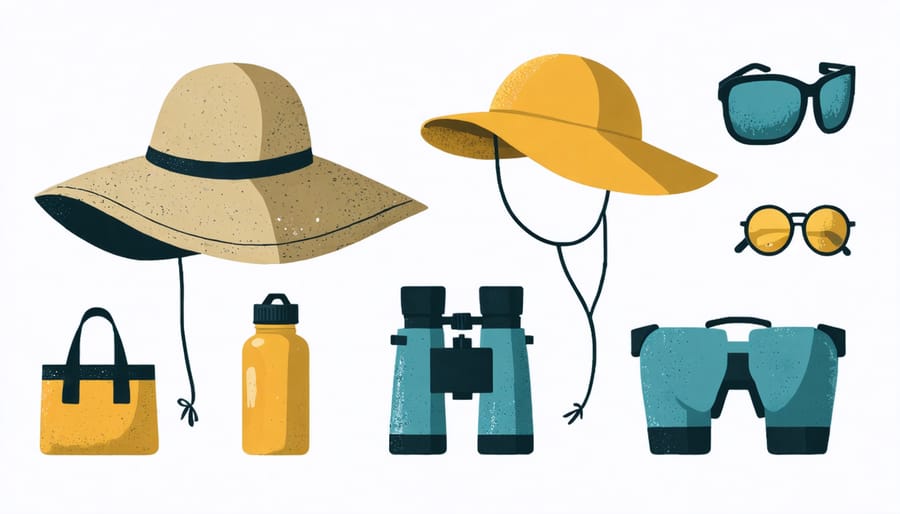
Safety Rules and Guidelines
Teaching safety rules to 6-year-olds should be fun and memorable. Use simple rhymes or songs to help them remember essential guidelines like “Stay where I can see you” and “If you’re not sure, ask before.” Always establish a meeting point in case of separation and make sure your child knows to stay there if they get lost.
Dress your little one in bright colors for better visibility, and consider using a whistle on a lanyard for emergencies. Teach them the “buddy system” early – even if their buddy is you! Make it a game to spot potential hazards like poison ivy or thorny plants, turning safety awareness into an engaging activity.
Sun protection is crucial, so make the “slip, slop, slap” routine fun: slip on a shirt, slop on sunscreen, and slap on a hat. Create a special handshake or high-five to do after applying bug spray, making it a positive ritual rather than a chore.
Remember to demonstrate good safety practices yourself – children learn best by example. Keep first-aid supplies handy and teach basic outdoor boundaries through games like “red light, green light” to reinforce stopping when called.
Getting outdoors with your 6-year-old is more than just fun – it’s an investment in their physical health, emotional well-being, and connection to nature. Whether splashing in puddles, building fairy houses from twigs and leaves, or going on backyard scavenger hunts, these activities create lasting memories while developing crucial motor skills and confidence.
Remember to start small with shorter activities and gradually build up to longer outdoor adventures as your child’s stamina and interest grow. Pack plenty of snacks, water, and weather-appropriate gear to keep your little explorer comfortable and engaged. Don’t forget to follow your child’s lead sometimes – their natural curiosity might lead to unexpected discoveries and learning moments.
The great outdoors is your family’s playground, offering endless possibilities for growth and bonding. From neighborhood nature walks to weekend camping trips, each adventure plants seeds of environmental awareness and active living that will flourish throughout your child’s life. So grab those rubber boots, pack a picnic, and start your outdoor journey together – amazing discoveries await just outside your door!

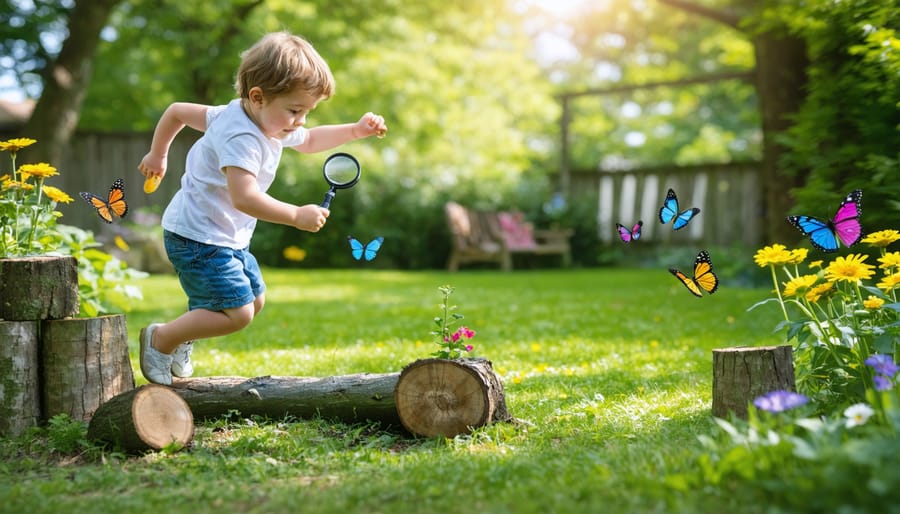






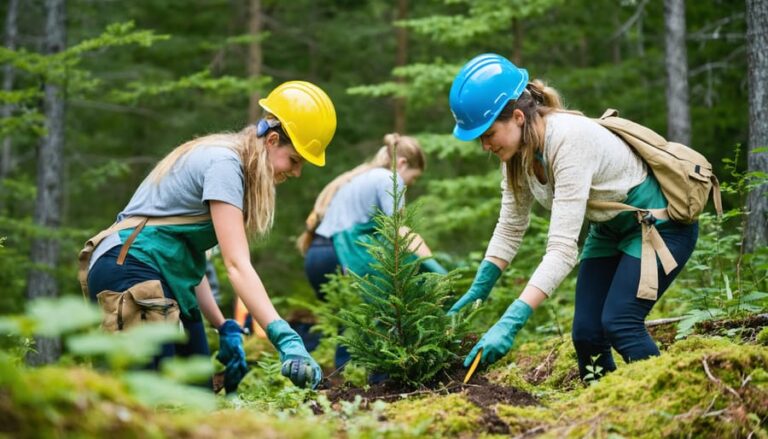
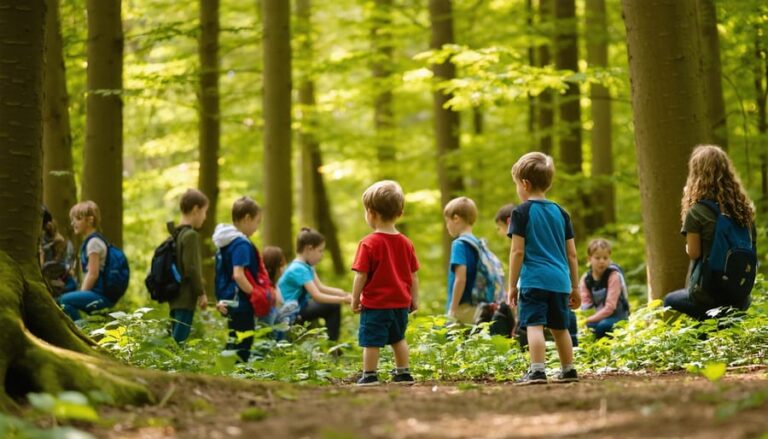
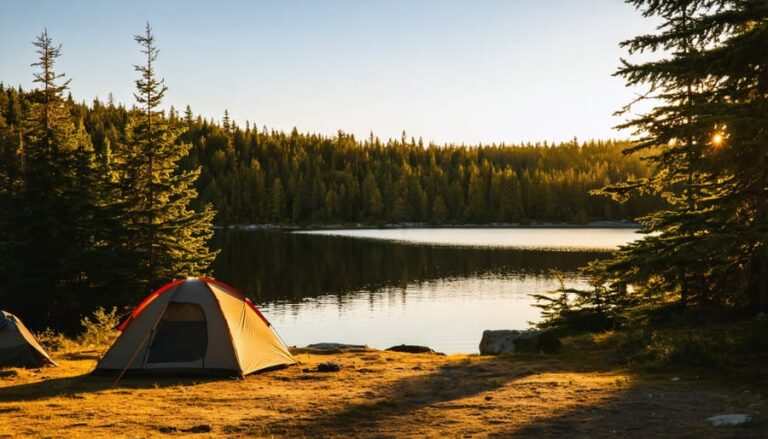
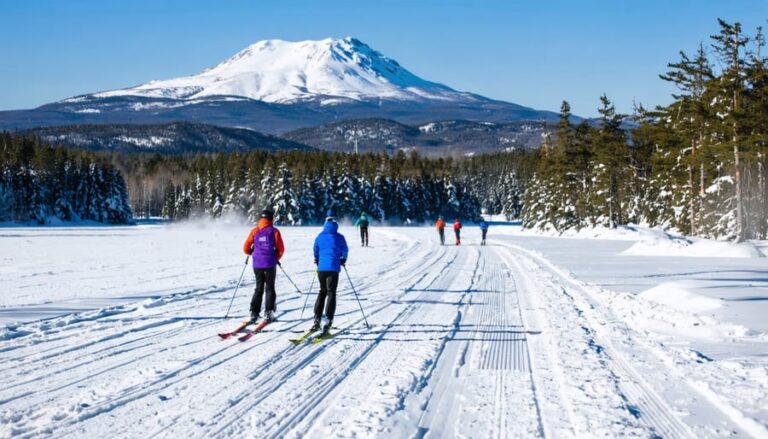

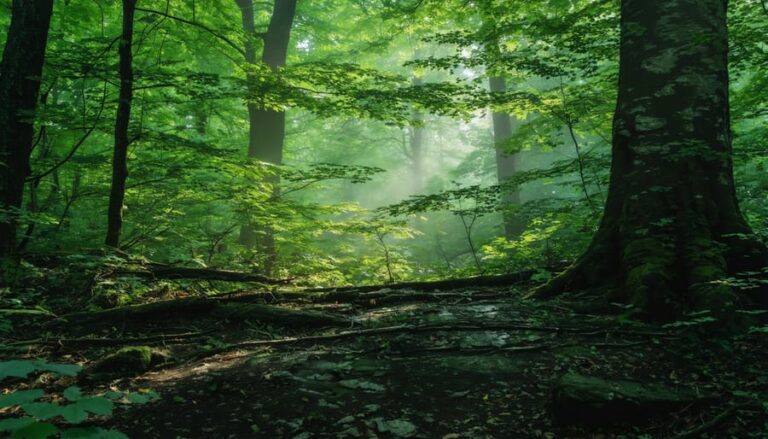
+ There are no comments
Add yours